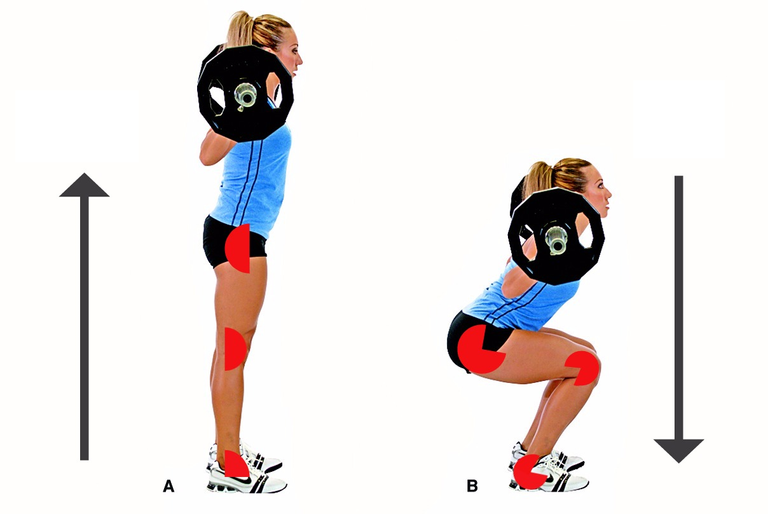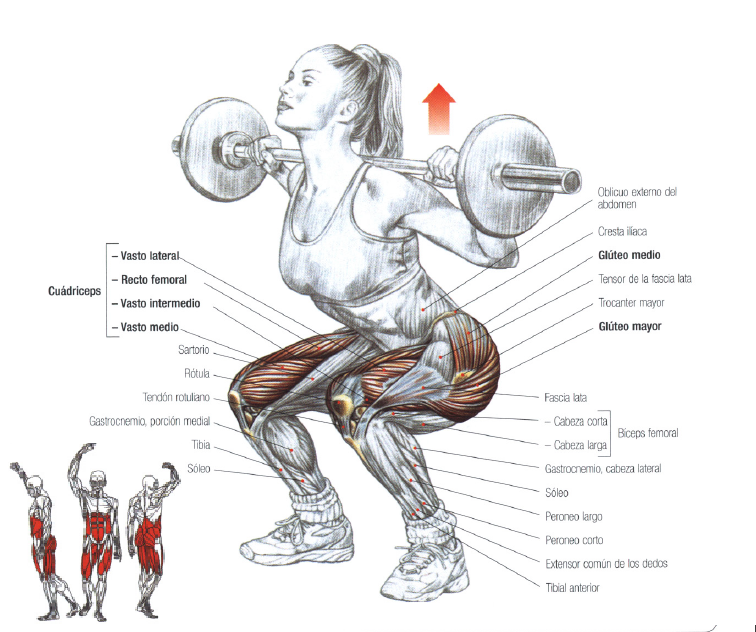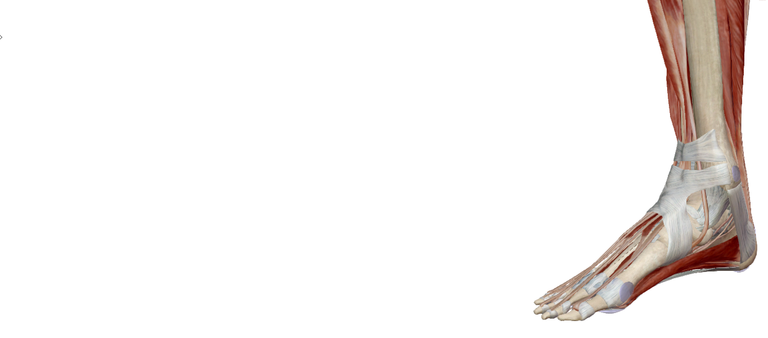
The squatting is one of the most complex exercises given the great variability of techniques and their relation with the performance of the athlete. Understanding the correct biomechanics of the squat is basic for optimal muscle development.
The squat has many biomechanical and neuromuscular similarities with many sports movements. And at the same time it has the ability to improve the way in which the body recruits muscles to work in synergy, so it improves our quality of life even outside the sports field.
Example: Baseball, basketball tennis, among others.
This movement begins with the fully erect individual flexing hip, knees and ankles until reaching the desired depth and returning the movement. They work muscles from the quadriceps, extensors of the hip, adductors, abductors, hamstrings, passing through abdominal muscles, spinal erectors, rhomboids, trapezes ...
In short, about 200 muscles are involved in this movement.

Ankle joint.
In this joint we find two, the subtalar and the talocrural. The first joint is concerned with postural stability and limiting eversion-inversion, the second facilitates movement from dorsiflexion-plantar flexion.
Gastrocnemias are one of the most important muscles to stabilize the ankle and knee joint, the middle head acts as a dynamic stabilizer of the knee during the squats compensating the moments in valgus as well as limiting posterior tibial translation. These muscles find their maximum activation coinciding with the moment of maximum flexion of the knee, also reaches its maximum stimulation the soleus at this moment. It makes sense if we think about it, the solos are muscles involved in plantar flexion while the gastrocnemius also work on stabilizing the knee.
Undeveloped anterior-posterior gastrocnemias or tibialis will diminish the ability to stabilize the knees in valgus.
A reduced dorsiflexion will also prevent this ability to stabilize the knees, causing a medial displacement of the knees.

Knee Joint
It consists of the tibial femoral joint, which deals with movement in the sagittal plane. The femur rotates laterally during flexion and medially during extension, this guarantees and improves performance during the squat.
The knee is stabilized by a series of ligaments, the most important of which is the ACL (Anterior Cruciate Ligament), prevents the anterior tibial displacement and limits rotation (internally and externally), helping to avoid a position in varus or valgus.
The medial and lateral collateral ligaments complement the stabilization of this joint in the frontal plane in moments of varus-valgus.
The LCP (posterior cruciate ligament) is the ligament that complements the anterior one, restricts the posterior tibial translation.
The most important muscles in the stabilization of this joint are the quadriceps (vasto lateral, medial, intermediate and rectus femoris, the tendon of this muscle facilitates the extension) allowing traction the tibia during the squat.
The hamstrings (biceps femoris, semitendinosus, semimembranosus) work as quadriceps antagonists, reducing the shear force produced by the quadriceps and reducing stress in the ACL.
The posterior shear forces (in the LCP) are manifested from the 30 °, reaching a maximum point at 90 ° and reducing progressively past this angle, near the maximum flexion these forces have been reduced considerably.
The greatest stress suffered by these ligaments is caused by the use of high loads without preparation.
By performing deep flexions (greater than 120 °) the anterior-posterior tibial translation and its rotation is reduced in comparison with flexures up to 90 °. Result: better stability and greater tolerance to high loads.

Hip Joint.
The shape of the hip, compressing the femoral joint with the coxal acetabulum allows movement in the three planes, abduction-adduction in the frontal and transverse plane, flexion-extension in the sagittal plane, and internal and external rotation.
The predominant muscles are the gluteus maximus and the hamstrings. The gluteus maximus is a powerful hip extender, in addition to stabilizing the pelvis. Find your maximum activation in the maximum flexion squat.

More information.
Guide bodybuilding movements. Fréderic Delavier. 6th Edition. Year 2011.
Starting Strength. Basic Barbell Training. Mark Rippetoe and Lon Kilgore. 2nd Edition. Year 2007.
Thank you
Have a nice day
Upvote + Reesteem.
Peace and love.